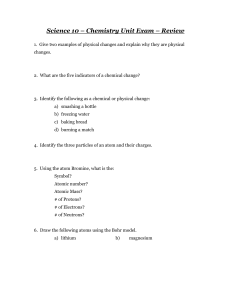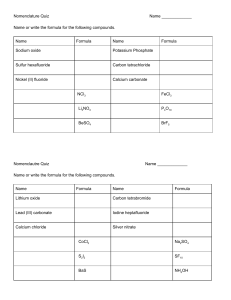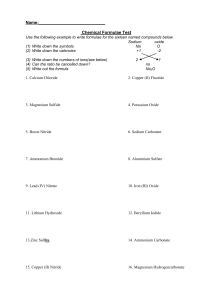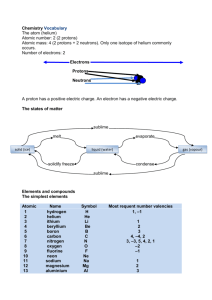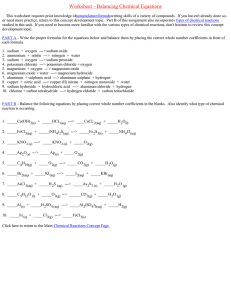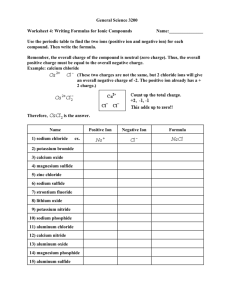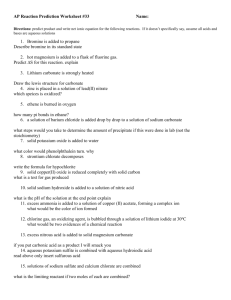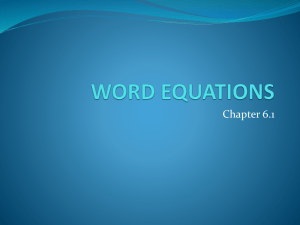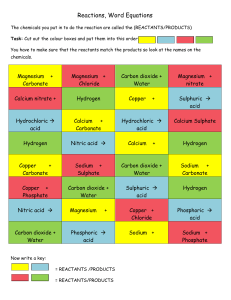CHEMICAL REACTIONS ASSIGNMENT FOUR
advertisement
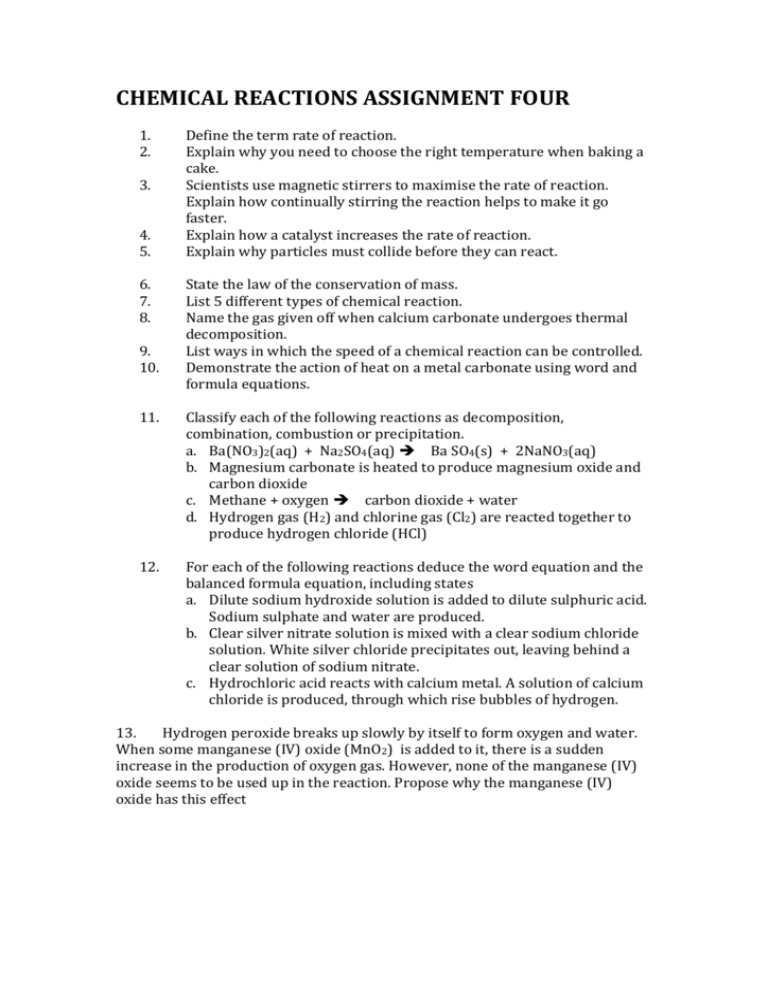
CHEMICAL REACTIONS ASSIGNMENT FOUR 1. 2. 3. 4. 5. 6. 7. 8. 9. 10. Define the term rate of reaction. Explain why you need to choose the right temperature when baking a cake. Scientists use magnetic stirrers to maximise the rate of reaction. Explain how continually stirring the reaction helps to make it go faster. Explain how a catalyst increases the rate of reaction. Explain why particles must collide before they can react. State the law of the conservation of mass. List 5 different types of chemical reaction. Name the gas given off when calcium carbonate undergoes thermal decomposition. List ways in which the speed of a chemical reaction can be controlled. Demonstrate the action of heat on a metal carbonate using word and formula equations. 11. Classify each of the following reactions as decomposition, combination, combustion or precipitation. a. Ba(NO3)2(aq) + Na2SO4(aq) Ba SO4(s) + 2NaNO3(aq) b. Magnesium carbonate is heated to produce magnesium oxide and carbon dioxide c. Methane + oxygen carbon dioxide + water d. Hydrogen gas (H2) and chlorine gas (Cl2) are reacted together to produce hydrogen chloride (HCl) 12. For each of the following reactions deduce the word equation and the balanced formula equation, including states a. Dilute sodium hydroxide solution is added to dilute sulphuric acid. Sodium sulphate and water are produced. b. Clear silver nitrate solution is mixed with a clear sodium chloride solution. White silver chloride precipitates out, leaving behind a clear solution of sodium nitrate. c. Hydrochloric acid reacts with calcium metal. A solution of calcium chloride is produced, through which rise bubbles of hydrogen. 13. Hydrogen peroxide breaks up slowly by itself to form oxygen and water. When some manganese (IV) oxide (MnO2) is added to it, there is a sudden increase in the production of oxygen gas. However, none of the manganese (IV) oxide seems to be used up in the reaction. Propose why the manganese (IV) oxide has this effect
